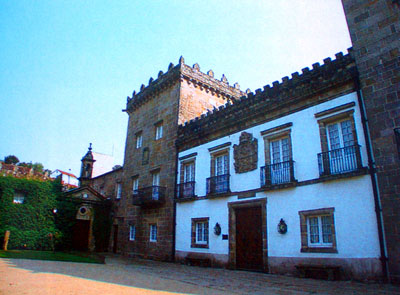The history of Vigo

Like many of Galicia's towns and cities, the life of Vigo has and continues to be dictated by the sea. Vigo has had a settlement in its present day location since before Roman times, but the important city that occupies the site now is a very recent addition.
From the days of the Roman occupation through to the medieval era, Vigo was nothing more than a collection of villages and parishes and, with a sea facing position, it was always subject to attack from hostile forces. This in part impaired its expansion.
Like most of Europe's coastal towns, Vigo had to endure aggression from the Vikings, the Normans and later attacks from the English and Dutch naval fleets.
Shortly after the turn of the nineteenth century, Vigo saw one of its most significant historic moments when the invading French army was repelled in 1809. Just over a century earlier a famous sea battle (of the Rande), now despatched to myth and legend, saw the British and Dutch attack and sink Spanish ships returning from the far off empire' colonies of south America. It has always been rumoured that these ships were laden with gold and treasure and that the Vigo bay still hides these lost riches. Periodically expeditions go in search of this "treasure" and there are constant debates about who could and could not claim ownership if it were discovered.
It was in the nineteenth century when Vigo really started to grow and its population began to expand. No longer a mere fishing village, Vigo embraced industry and took its first steps towards becoming an industrial powerhouse.
Unfortunately with this expansion, and the prosperity that fed it, came the demolition of the old town's walls and many of the original fishermen's houses. The town spread beyond its previous borders and industries built around "canned" goods and salt caused many farmers and fishermen to become industrial (and better paid) workers.
Vigo in the 20th century
The twentieth century saw the biggest and most favourable turn in Vigo's fortunes as its port continued to grow in importance and its population approached fifteen thousand inhabitants. By now Vigo had become a centre for transportation and it traded with the Americas and the rest of Spain. It was also during this period in the town's history that many of the large and regal buildings of the city were designed and built. This has given Vigo an early twentieth century legacy of architecture that is unique in Galicia.
As Vigo moved further into the twentieth century, so its prosperity increased and at a level beyond that of any of Galicia's other cities. Particularly the provincial capital of Pontevedra. Vigo also used its wealth to employ forward thinking approaches to town planning and created a number of individual urban areas, each with its own identity.
Today Vigo has four important museums, the biggest port in Galicia (and possibly in the whole of Spain) and it retains the "city" status that it gained in 1810. The city also has a successful football team and even now an expanding economy that gains much investment from abroad.

